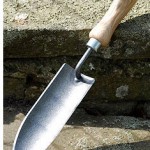There are approximately 180,000 lawnmower accidents per year. In this introductory presentation, we undertake to describe the various ways in which these accidents occur.
There are two general types of power lawnmowers: the walk-behind type, in which the user guides the mower by means of his hold on the push-bar at the rear, and the riding type, in which the operator sits on the mower and controls its operation from that position. The walk-behind type is generally propelled by the user, but in some machines is propelled by the same engine that drives the cutting blade. In the latter case there is provided some form of clutch/shift arrangement to allow separate control of the cutting blade and the propulsion of the mower. The riding type is invariably propelled by the same engine that drives the cutting blade, again with suitable provision for separate control of the blade and the propulsion. In many cases there is also provided means for running the engine alone, which enables the engine to be started, and warmed up or adjusted, without involving the cutting blade or the propulsion mechanism.
The leading cause of lawnmower accidents is contact with its rotating blade. While the danger from this cause may seem obvious, it is an established fact that people will place their fingers near the blade, generally in an attempt to clear away a clump of grass or other undesired matter. Most of these accidents occur when the person reaches under the “skirt” of the mower, or reaches into the discharge chute.
Another cause of accidents is the throwing of objects, such as small stones, by the blade. The tip of the blade can be moving as fast as 200 miles per hour, and can project small, hard objects as far as 50 feet. These objects can travel in any direction, depending on the angle at which the blade encounters them, and can injure nearby persons including the operator himself.
Again, the operator or a nearby person may slip in such a way that his foot enters under the skirt of the mower and contacts the rotating blade, with readily foreseeable results.
Burns may occur as a result of a person touching a hot surface of the exhaust system of the engine of the mower. In addition, fires can result when there is leakage of gasoline for any reason, and the gasoline vapor is ignited by a spark from the ignition system of the engine (including the battery, if there is one), or by an abnormally hot surface of the exhaust system. Injury can also result from contact with an inadequately shielded part of the propulsion system, such as a sprocket wheel or gearing.
The remaining causes of injury apply only to riding type mowers. One of these causes is the potential instability of such a mower, which may cause it to overturn under certain conditions. The overturned mower can fall on the operator; or it may cause rupture of the gasoline tank, with consequent danger of fire: or it may lead to contact of the rotating blade with the operator.
Because of the operator’s limited visibility to the rear, a riding mower may be subject to back-over accidents, in which the mower runs over a child or other person while going in reverse. The likelihood of back-over accidents is increased by the fact that the noise of the mower makes it harder for the operator to hear the warning cry of a person behind him.
Finally, the mower may stall while climbing up a steep hill, and the brakes may not be strong enough to hold the mower on the hill or allow it to descend gently, with the result that the mower plummets down the hill, and crashes into a tree or other obstacle, or else overturns.
Technorati Tags: lawnmower accidents, power lawnmowers, cutting blade, mower
 It’s the perfect tool for making small, narrow holes in areas with little space and it makes just the right sized holes for small seedlings.
It’s the perfect tool for making small, narrow holes in areas with little space and it makes just the right sized holes for small seedlings.